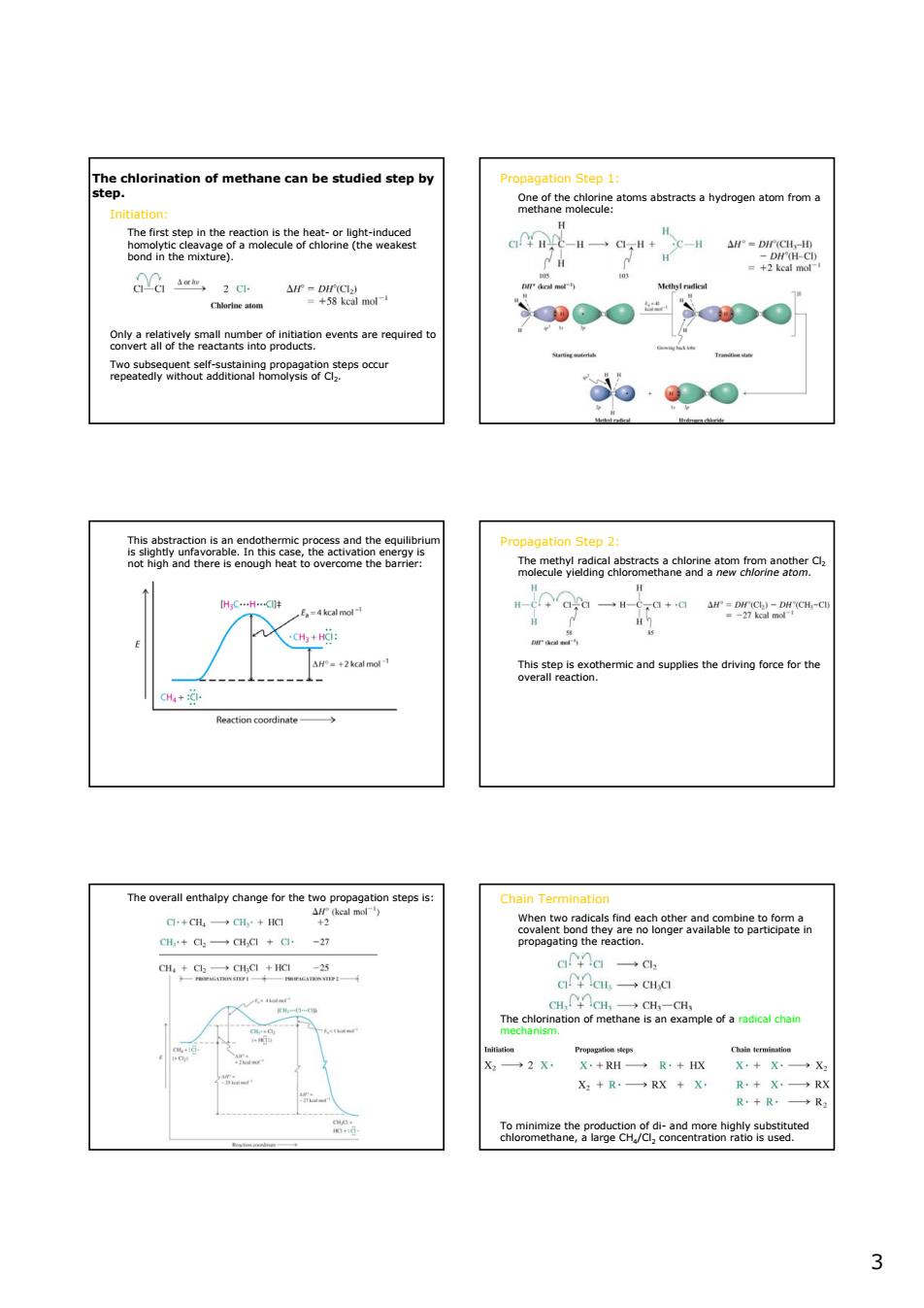正在加载图片...

chlorination of methanetudied stepby ation Step 1: sr二0mr “ Cgoaaoemsneeauroda TpestaeqentleadnaaPm8r32aeeepsocau Step 2 Themciore atomothe C r:a=a ndupplles thedrivng force orthe +CH,H,+a +a3aH,0+0·-27 ww..ww.nm. 二 X+一R+ X+X一 X+RRX+X· Chloromehe 33 The chlorination of methane can be studied step by step. Initiation: The first step in the reaction is the heat- or light-induced homolytic cleavage of a molecule of chlorine (the weakest bond in the mixture). Only a relatively small number of initiation events are required to convert all of the reactants into products. Two subsequent self-sustaining propagation steps occur repeatedly without additional homolysis of Cl2. Propagation Step 1: One of the chlorine atoms abstracts a hydrogen atom from a methane molecule: This abstraction is an endothermic process and the equilibrium is slightly unfavorable. In this case, the activation energy is not high and there is enough heat to overcome the barrier: Propagation Step 2: The methyl radical abstracts a chlorine atom from another Cl2 molecule yielding chloromethane and a new chlorine atom. This step is exothermic and supplies the driving force for the overall reaction. 43 3 Slightly Very Favorable Unfavorable Drives First Reaction CH + Cl CH + HCl CH Cl + Cl + HCl ⋅⋅ ⋅ ˆˆˆˆ†ˆ ˆ ˆ ˆ ˆ ˆ ˆ ˆ ˆ ˆ† ‡ ˆ ˆ ˆ ˆ ˆˆ ‡ ˆ ˆ ˆ ˆ ˆ ˆ ˆ The overall enthalpy change for the two propagation steps is: Chain Termination When two radicals find each other and combine to form a covalent bond they are no longer available to participate in propagating the reaction. The chlorination of methane is an example of a radical chain mechanism. To minimize the production of di- and more highly substituted chloromethane, a large CH4/Cl2 concentration ratio is used